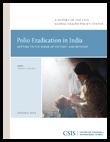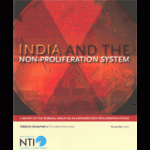
India’s struggle against major health challenges in the past few decades has been a white-knuckle ride, with India illustrating some of the best as well as the worst of the health problems of the developing world.
But now – even though those closest to the effort are unwilling to declare victory prematurely – there is a good chance that India’s polio eradication campaign will tell a more inspiring story. In 1988, when the World Health Assembly formally adopted polio eradication as a global goal, WHO data recorded 23,800 cases of polio in India. At this writing, it has been a year since the last case was identified, in West Bengal on January 13, 2011.
Read full report, published by CSIS January 24, 2012.


